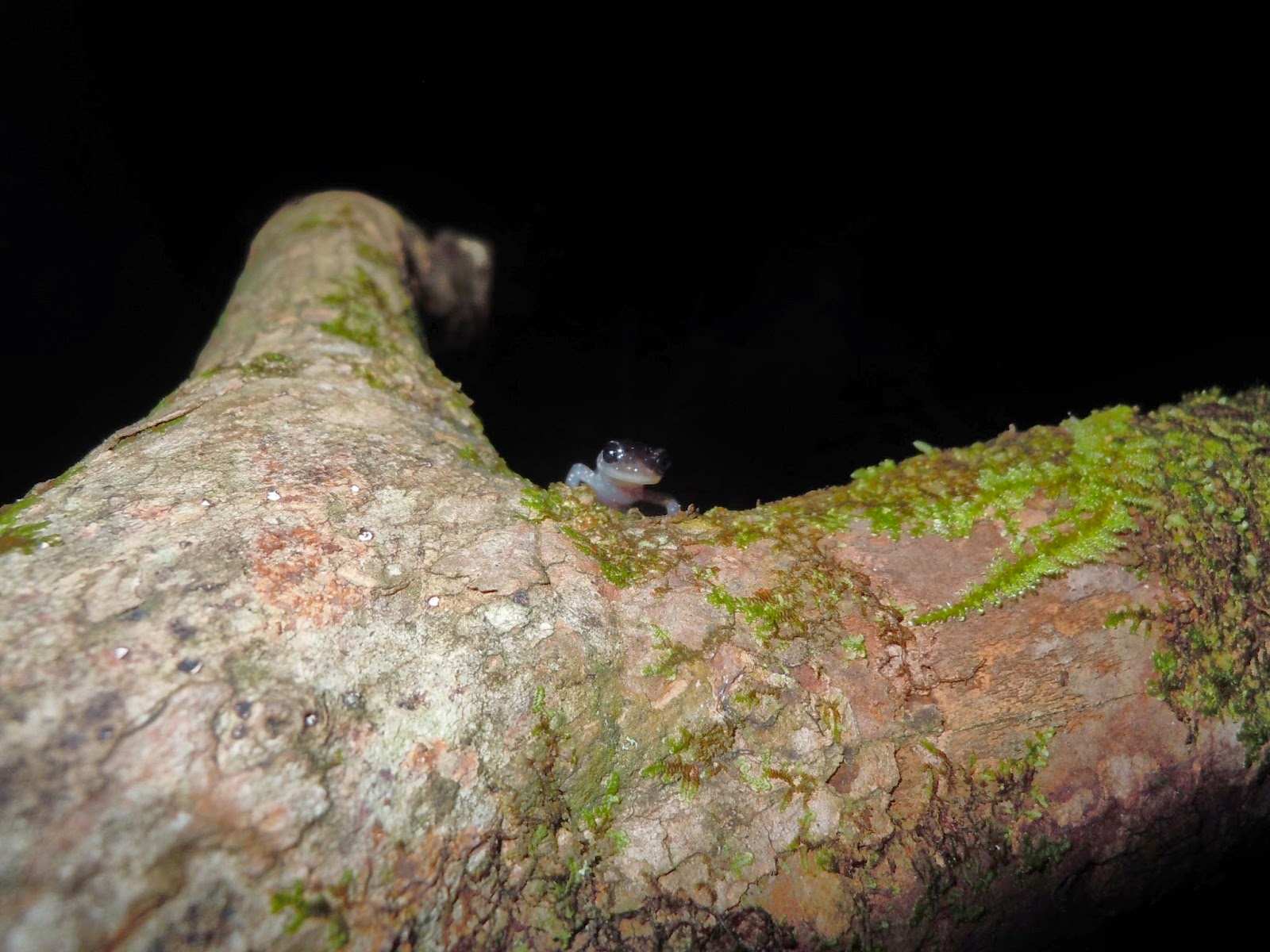Well I am officially behind on updating this Blog. That didn't take long... SO, this massively long post will cover field surveys through the end of July, August, and September. Bear with me, there are some pretty interesting and adorable photos throughout! The diversity in the Southern Appalachain Mountains is astounding. I am constantly amazed by the number of different invertebrates, fungi, and plants I get to see when out looking for salamanders.
July:
This snail just looked too funny, stretched all the way out from one rock to the next. Rather than crawling down and back up, it seems this snail decided to be daring and cross the open space. 

Though fewer flowers were blooming by the end of July, this flower was fairly abundant along the road and is in the genus Monarda. This genus is in the mint family and includes flowers like bee balm and basil. The stem is square and the flowers have the very distinctive arrangement and shape as pictured below. I believe this one below is commonly called Basil Bee Balm or White Bergamont (Monarda clinopodia).
As per usual there was an abundance of fun and colorful fungi:
And (of course) we saw lots of salamanders. In one 10m X 10m plot we caught 66 salamanders! Most of them were quite small, but that is still an incredibly high density. Salamanders are impressively abundant in Southern Appalachia.




The Ocoee salamander below (on the left) had a very nice yellow cheek. The color patters of this species is highly variable. The Ocoee on the right was impressively clinging to a vertical leaf!
Perhaps the most fascinating (and slightly creepy) observation from July surveys was seeing this harvestman (AKA Daddy long-legs) eating a juvenile salamander. We think this salamander was about a year old, and was likely on the leaf before it was eaten. I guess it is not any safer for small salamanders to be up on the vegetation.
This pair of Ocoee salamanders was observed twice in one night, several hours apart. They seemed to hardly move!
August:
During August surveys we continued to see salamanders abundantly climbing on vegetation. This behavior is certainly common for salamanders at the Coweeta LTER.
Clearly they will climb on anything, as the juvenile Blue Ridge Two-lined salamander (Eurycea wilderae) demonstrates above.
Sometimes the Ocoee salamanders are very well hidden, even on the trees:
We found 2 Cranefly Orchids (Tipularia discolor) while conducting surveys. They were fairly tall (about 1 foot) skinny stalks with no visible leaves and multiple flowers. This flower is found throughout the eastern United States. Although it is abundant in North Carolina (according to the Native Plant Society), it is considered rare, threatened, or endangered in other states.
A few especially handsome salamanders seen in August:
 |
| Male Eurycea wilderae with cirri |
 |
| Female Plethodon teyahalee |
 |
| Male Eurycea wilderae with cirri |













































































